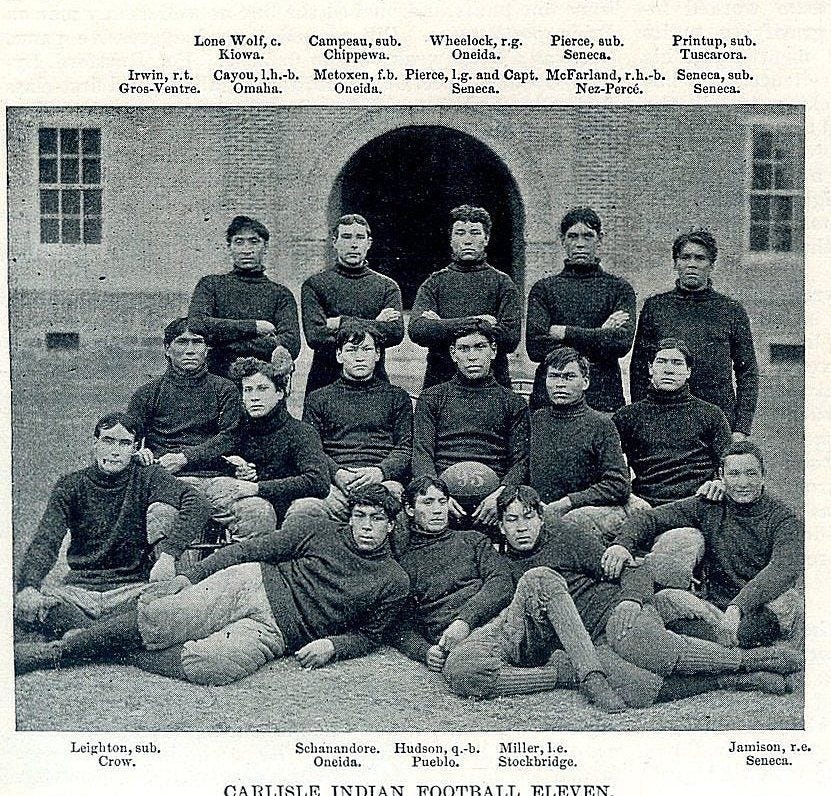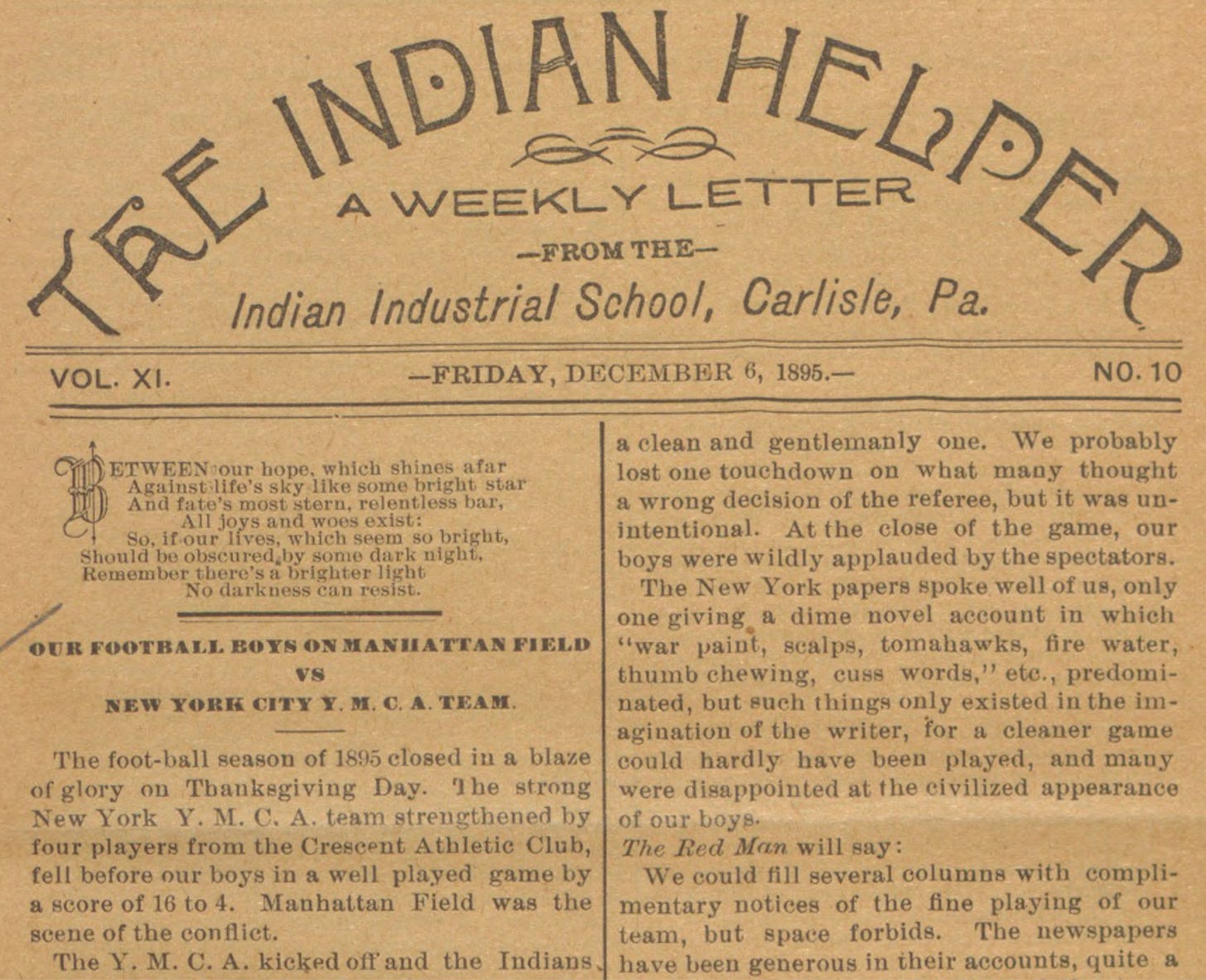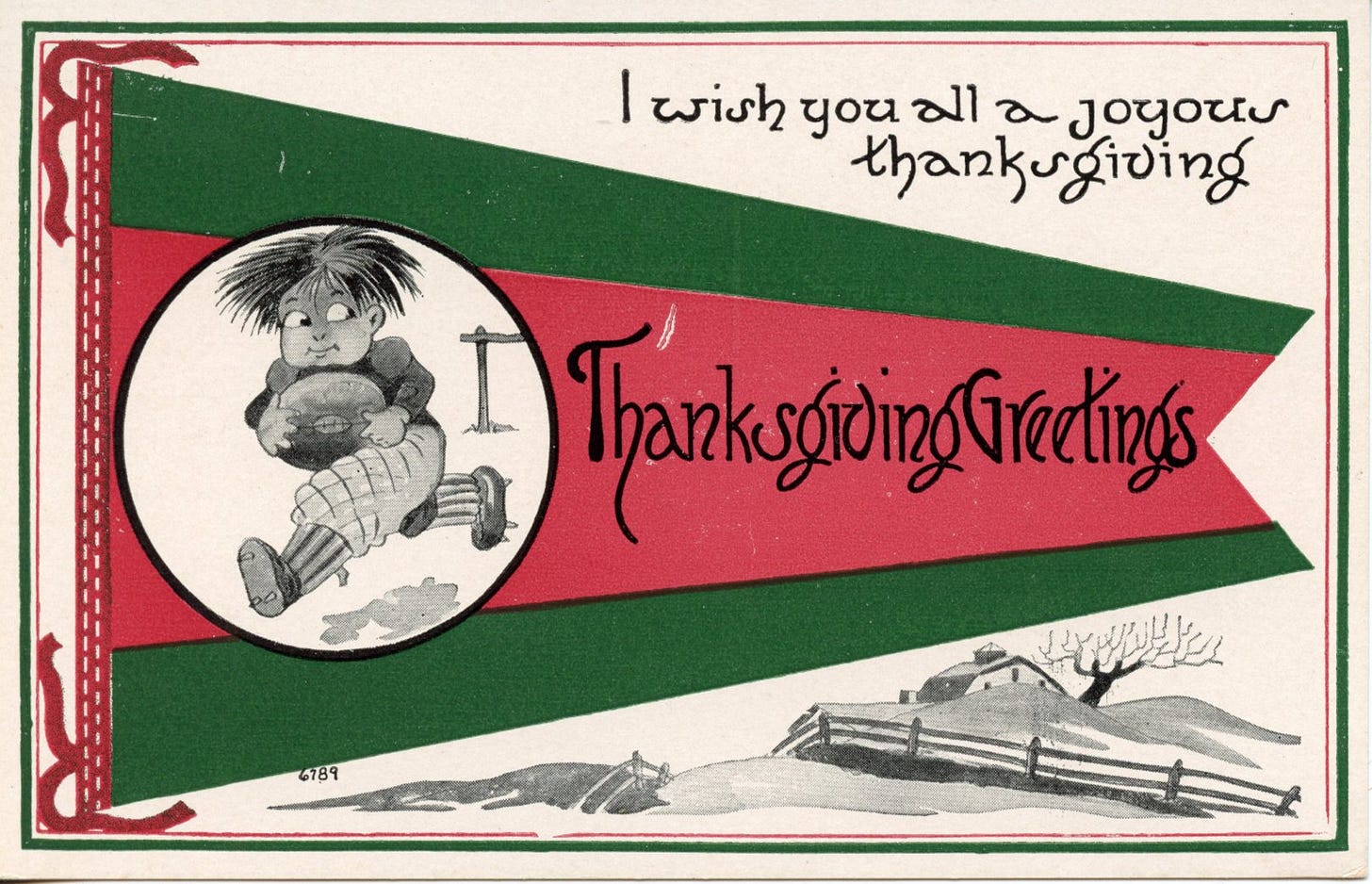The Carlisle Indians And Their First Thanksgiving Day Football Game
Thanksgiving Day commemorates a 1621 feast between the Wampanoag tribe and the Pilgrims following a bountiful harvest. Eating well has long been a part of the day’s traditions, as has football. That tradition was set in stone when the Intercollegiate Football Association (IFA) chose to hold its annual championship game in New York City on Thanksgiving Day. Those IFA games involved two teams comprised of Caucasians, and football games involving Native Americans arrived soon afterward.
Tom Benjey, the noted Carlisle historian, indicates that students at Carlisle played an intramural game on Thanksgiving Day 1891. The school fielded its first team playing outside competition in 1893, and by 1895 had upped its game enough to play Penn, Navy, Yale, and Bucknell, losing all four. In the last game of the 1895 season, Carlisle faced the New York City/Manhattan YMCA team, marking the first known football game in which a Native American team played outside competition on Thanksgiving Day.

With only a small percentage of Americans attending college in 1895 and professional football not yet on the scene, YMCAs in many locations fielded competitive football teams, often playing athletic club and college teams. For example, the week before Carlisle met the Gothamites, they played the York (PA) YMCA and won 42-0.
There’s not much information available on the New York YMCA team, other than their 38-6 loss early in the year to Crescent AC, one of the nation’s top athletic club teams. Luckily for the New York YMCA, four Crescent AC linemen agreed to play with the YMCA team against Carlisle, bolstering their chances for victory against the 3-4 Indians.
The game was the only football show in town on Feast Day because Yale and Princeton met at the Polo Grounds the Saturday before Thanksgiving, warranting a tiny ad in the New York Times touting their game at Manhattan Field.
While Carlisle was not yet competitive with the nation’s top college teams, they were well coached and had their share of star players. Carlisle’s coach in 1895 was Vance McCormick, a former All-American quarterback at Yale. The game with Manhattan YMCA would be McCormick’s last as a coach, as he went on to more critical matters in a career that included leading the American delegation at the Treaty of Versailles. Carlisle’s top players included captain Bemus Pierce, Frank Cayou, and Dennison Wheelock.
Carlisle stayed at The Ashland and dressed for the game at the YMCA, before tally-hos took both teams to Manhattan Field, a ride that took ninety minutes, but included a tour of Central Park.

The game attracted between 1,500 and 5,000 fans, depending on which newspaper you trust, and whether you count the fans who watched for free on Coogan’s Bluff. Still, the attendees understood from the outset which team was superior. Carlisle started the game with two long, methodical drives, running up the middle to score touchdowns at the 12- and 22-minute marks, converting both kicks. Since the scoring team then could choose to kick or receive back after their second touchdown, Carlisle decided to receive, only to see Metoxen, their fullback, wrench his knee and fumble on the play. The YMCA recovered the fumble and crossed the goal line within several plays to finish the scoring at 12-4 for the half. Carlisle earned another touchdown in the second half to win 16-4.
As detailed in the school newspaper, The Indian Helper, following the game, the teams rode back to the YMCA to shower. After a quick dinner at the hotel, Carlisle returned to the Y for a prayer meeting, a musical and literary program, and a banquet.

On Thanksgiving Friday, Carlisle took advantage of their first trip to New York City by touring the New York Tribune facilities, a New York City Fire Department station, the Western Union Telegraph office, and walking across the Brooklyn Bridge.
Only then did they board a train back to Carlisle, leaving the big city behind.
Previous stories about Thanksgiving football include:
Football Archaeology is reader-supported. Click here to donate a couple of bucks, buy one of my books, or otherwise support the site.






Great article, as always! However, and understand I hate being “that guy,” but the first Thanksgiving with the Pilgrims is usually credited as occurring in 1621, as opposed to 1691, as the first sentence states. It is irrelevant to the article - just thought I would point that out. Thanks for all your work!